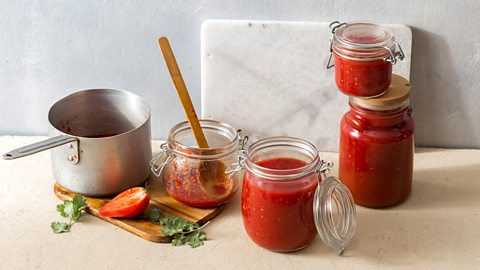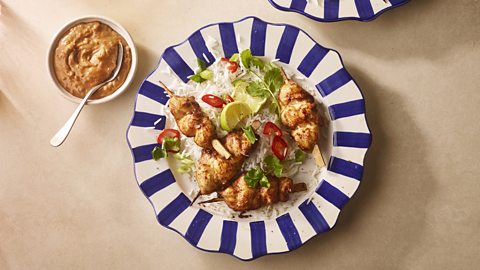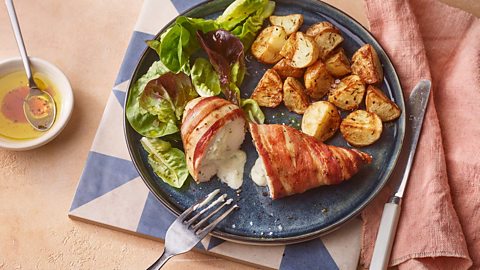What happened to my bank balance (and sanity) when I ate British for a week
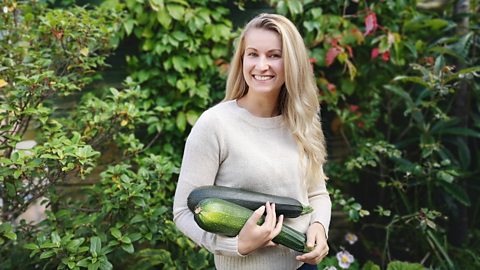
If I go one more day without tea or coffee, I could have a meltdown. Headaches are rife, motivation is low and all I want is a latte and a square of dark chocolate. It’s only day three of my week-long British food challenge.
I grew up eating homegrown fruit and veg, with meat and milk from down the road. It’s a far cry from my current city diet – I try to buy British, but I’m a self-proclaimed foreign food fan. I have a whole kitchen cupboard dedicated to Chinese food!
However, it’s not only foreign-labelled foods that are off the menu. Many of our everyday staples aren’t grown on home soil. I knew switching to eating exclusively British produce for a week would be tricky, but I didn’t realise how much I’d learn and how painful it would be.
Getting started
To get started, I rifle through my fridge, freezer and cupboards, and it dawns on me how much has to be quarantined for the next seven days. Most seasonings, pasta, rice, noodles, sauces, nuts and seeds are out – but what’s in?
I comb through a typical weekly food plan to suss out what can be swapped out for a British alternative. I can’t find a switch for fish sauce, Sichuan pepper or sriracha, which means I can’t make my favourite dishes.
I mourn the loss of the forbidden foods, but try to be optimistic about how much is available even in a standard supermarket.
The coffee conundrum

Day one morning brings the most pressing, unanticipated issue. Tea and coffee aren’t grown in the UK (except for a little tea from Cornwall and coffee beans harvested by the Eden Project).
By day three, painkillers can’t keep the headaches at bay. I’m also hungry earlier in the day (presumably because coffee suppresses appetite), and wolf down lunch before 12 o’clock.
I usually have two coffees and two teas a day – and caffeine withdrawals are no joke! I swap in hot water and fresh mint tea. At one point I even have a dash of milk in hot water (I don’t recommend it). Nothing equates to a fresh brew and the smell of coffee in the office is close to torture. Luckily, the pain lessens on day four and, apart from old habits dying hard, there’s no urgency for a cup of java.
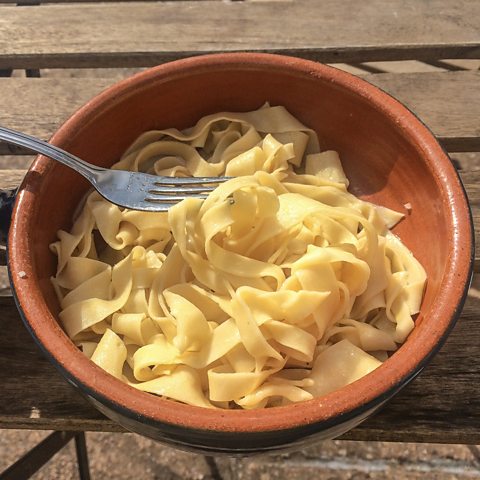
Into the supermarket
Piling broccoli, cauliflower, spinach, tomatoes and spring onions into my trolley, I feel pretty happy. I even find pak choi – turns out some veg I assume to be 'foreign’ is grown in the UK. Maybe this won’t be so tricky after all!
Friends and family have handed over homegrown courgettes (more like marrows) and some other veg. There’s an apple tree and rhubarb in my garden and blackberry bushes everywhere. That’s fruit (and crumble) sorted. I miss my daily banana, and blueberry porridge (but grated apple or rhubarb compote are just as good).
Then comes the first big hurdle… pasta! It contains flour from Italy. In desperation I buy plain flour to make 'British’ fresh pasta (it turns out to be surprisingly good). I discover quinoa is grown in Britain and, delighted to find a rice substitute, pick up a bag to make a risotto-esque dish with veggies, cheese and mint from the garden.
Then I find out (and this is BAD news) the beans in baked beans are not grown in the UK! But it turns out there are lots of British beans and pulses. I go for a bag of roasted, salted fava beans instead of my usual salted dark chocolate, and realise I’m craving the salt more than the chocolate anyway.
I buy a loaf made from British flour (though you can make your own bread). My usual peanut butter is out of the question, so I plan to make cheese on toast and have it with butter and marmite or honey. I’m a sucker for cheese. I usually have Italian cheese for pasta, but Cheddar and Cornish goats’ cheese are on offer, so I pick them up to add to salads, soups and omelettes.
Most eggs sold in the UK are British (look for the Red Lion stamp), so I put a box in the trolley for eggs on toast and Spanish omelette. Almost all milk is produced in Britain too, so in the trolley it goes. If you drink dairy alternatives you might struggle, but you can make your own oat milk from Scottish oats.
When choosing meat, I read the label or look for the Union Jack. It’s as simple as that when you’re shopping for whole products, but it can be more complicated with processed food. Lots of fish is farmed or caught in the UK. I choose Scottish smoked mackerel, as it’s inexpensive and great with potatoes and broccoli for a quick dinner.

British food is not bland
The best news of the week? Lots of the fresh chillies in the supermarket are British! You can easily find British salt and pepper and fresh herbs, and use rapeseed oil instead of olive. I’m yet to find a way to make a 100 percent British curry, but I’ll keep trying!
What’s the cost?
I’ve ended up spending less than usual. This might have something to do with free produce from friends and family and I must have saved a shed load by abstaining from chocolate and coffee. But buying British sometimes costs less than buying imported foods, especially when you buy in season. I could probably have done this for even less money, but I don’t fancy root veg for dinner every day!
Have I changed my ways?
Could I do this forever? Probably not. But now I can make British pasta, I’m well on my way to reducing my reliance on imported food. If I can make a decent sriracha substitute and the UK starts growing rice, I’m fully in!
Bringing my cooking back to basics has taught me to appreciate what we have. But it can be difficult to work out if processed food is purely British, as small amounts of ingredients such as seasonings and palm oil are often included.
It might not be this easy in another season. But with more freezing, preserving and storing harvest fruit and veg, I could plunder my store cupboard year-round rather than resorting to imported produce from sunnier climates.
I admit I’m going to keep drinking tea and coffee. They’re too pleasurable to give up. But I might switch to decaf, so if I avoid it again there aren’t painful repercussions.
Like me, you might already be buying predominantly British food without realising it. On occasion, it’s easy to buy an alternative to your imported staple, but sometimes dishes can’t be altered to make them homegrown… and I’m not ready to give them up just yet.

